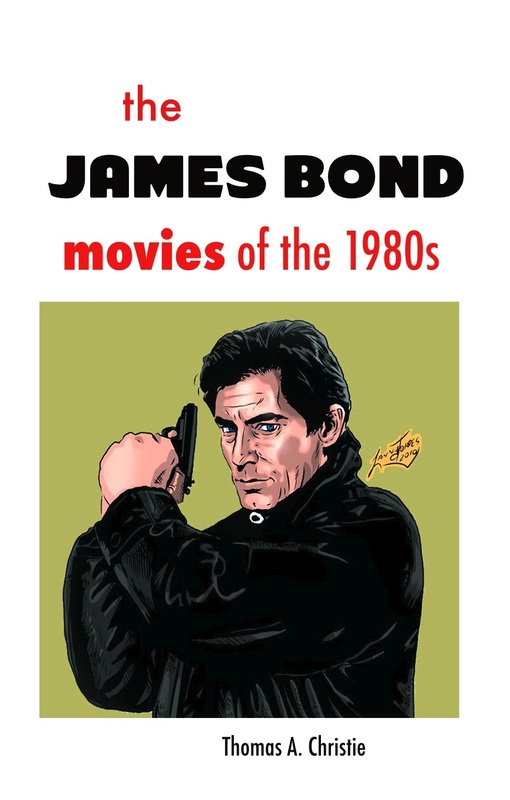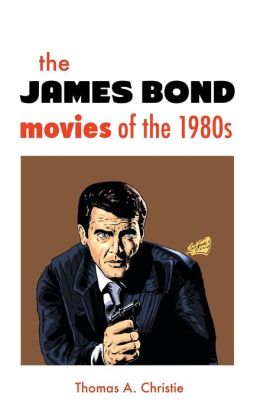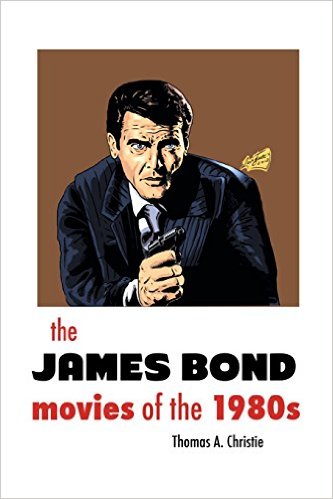The James Bond Movies of the 1980s (2013)
|
Paperback and Hardback
332 Pages Crescent Moon Publishing Published December 2013 Paperback Edition ISBN-10: 186171484X ISBN-13: 978-1-86171-484-8 Paperback Edition [Amazon Exclusive] ISBN-10: 1861714503 ISBN-13: 978-1-86171-450-3 Hardback Edition ISBN-10: 1861714858 ISBN-13: 978-1-86171-485-5 The James Bond film series is Copyright ©1962- Eon Productions, all rights reserved. This book is an unofficial publication and is not endorsed or approved by Eon Productions. Book Details: Eon Productions’ series of James Bond films have long been considered among the most popular and successful of British motion pictures, and have also come to be regarded as a useful barometer of Western geopolitical attitudes throughout the series’ long-running duration. This book takes a look at all of the Bond films produced during the 1980s, and investigates the series’ changing approach to its subject matter during this most socially turbulent of decades. Moving from the East-West tension plotlines of the late Roger Moore period into a conscious deviation towards less conventional subject areas during the Timothy Dalton era, Bond’s evolving role as a Cold War hero is examined in order to ascertain just how the character was adapted to meet the demands of rapidly changing world affairs. The eighties saw a more nuanced approach to the Iron Curtain in comparison to many earlier films in the series, with the films covering topics as wide-ranging as free-market capitalism and the home electronics boom, and the producers’ ongoing efforts to ensure the cycle’s continuing relevance to contemporary audiences are considered in detail. Drawing on statistical data and a wide range of research material, The James Bond Movies of the 1980s considers matters such as the films’ cultural impact, the series’ radical shifts in style, and its often subtle approach to issues of ideology both domestic and international. Assessing this multifaceted era of the Bond series, this book evaluates differences in contemporary critiques and asks to what extent these motion pictures succeeded in charting the seismic shifts in the global balance of power which took place during that eventful period of history. Features: The James Bond Movies of the 1980s discusses a variety of different aspects of the Eon Productions franchise throughout the course of the 1980s, such as Cold War geopolitical influences, the exploration of Anglo-Soviet and Anglo-American relations, audience reception, the place of the Bond films in eighties film culture, and the series' continuing cultural relevance around the world. The films discussed include For Your Eyes Only (1981), Octopussy (1983), A View to a Kill (1985), The Living Daylights (1987) and Licence to Kill (1989), in addition to the unofficial production Never Say Never Again (1983). The book includes a full scene-by-scene analysis of The Living Daylights, carefully examining the narrative structure of that 25th Anniversary entry in the Bond cycle. There are also a number of appendices containing details of director and lead actor filmographies, production and cast credits, box-office statistical data, and representative critical opinion from contemporary and modern sources. The Inside Story: The James Bond film series has proven to be a perennially popular franchise, always being adapted by Eon Productions to meet changing audience expectations. I was interested in examining one particular section of the series' history in detail, and the 1980s proved to be a specific era which offered a great deal that was worth focusing on. It was a decade where, for the only time (to date) in the franchise's history, one director was responsible for helming every entry in the series - John Glen, who directed five consecutive Bond films in ten years. As well as the febrile real-world geopolitical situation which was featuring as a backdrop for the Bond cycle, the eighties was also a period which saw a well-publicised change of lead actor, a high-profile unofficial Bond film competing with the official franchise, and a determination by the creative team to bring a darker, more realistic edge to the franchise. Having been an admirer of the original Ian Fleming novels, I have always had particular regard for Timothy Dalton's stark, no-nonsense portrayal of the franchise's famous lead character, and this book gave me the opportunity to examine exactly what it was about Dalton's Bond that seemed so well-suited to the cultural climate of the time. But of course, the eighties were also to see the departure of the widely-admired Roger Moore, an actor who had made the role his own for twelve years before finally passing the Bond baton. The contrast in approach of these two actors is discussed in detail, as is the Eon creative team's strategies for showcasing their different strengths in this most culturally prominent of lead roles. The scene-by-scene analysis of The Living Daylights was also a challenge that had to be carefully considered. Bond fans are famously well-read and informed, deeply committed to the production facts of the series, and so information about locations and technical details of the films' gadgets would already be intimately well-known to them. Indeed, many authors over the years have tirelessly laboured in their efforts to chronicle the vast wealth of factual minutiae and statistical data relating to the Bond films over the years - including painstaking accounts of the productions from those involved in their creation - so I was keen to avoid retreading similar ground. Instead, what really interested me was the narrative structure of a typical Bond movie: the films' immediate accessibility to audiences, the careful balance struck by Eon Productions between recognisable conventions and an adaptively flexible format, and of course the subtle refinements which have taken place as the series continues. The Living Daylights was of particular interest in this regard, not only because of the expectations surrounding its release as the series' 25th Anniversary film but also due to the debut of Timothy Dalton and the ongoing efforts of director John Glen and producers Albert R. Broccoli and Michael G. Wilson to revive something of the gritty ruthlessness of the franchise's 1960s glory days. With the continued relevance of the series - Daniel Craig's pre-filmed appearance at the opening ceremony of the 2012 London Olympics, the huge popularity of Sam Mendes's film Skyfall, and many other celebratory features and events - it seems that the cultural significance of the Bond films is in no danger of diminishing at any time in the near future. I was particularly enthused about working on this book, not least given my interest in the cinema of the eighties generally, with my initial research for the project stretching all the way back to my Master's degree in 2005. So I was grateful to Crescent Moon Publishing for agreeing to publish The James Bond Movies of the 1980s, and for making possible my own contribution to this exciting area of research. |








